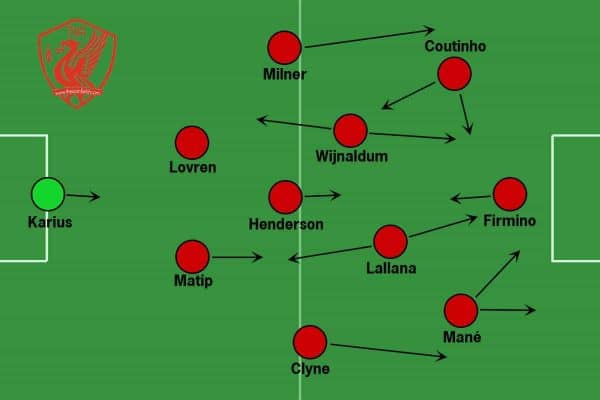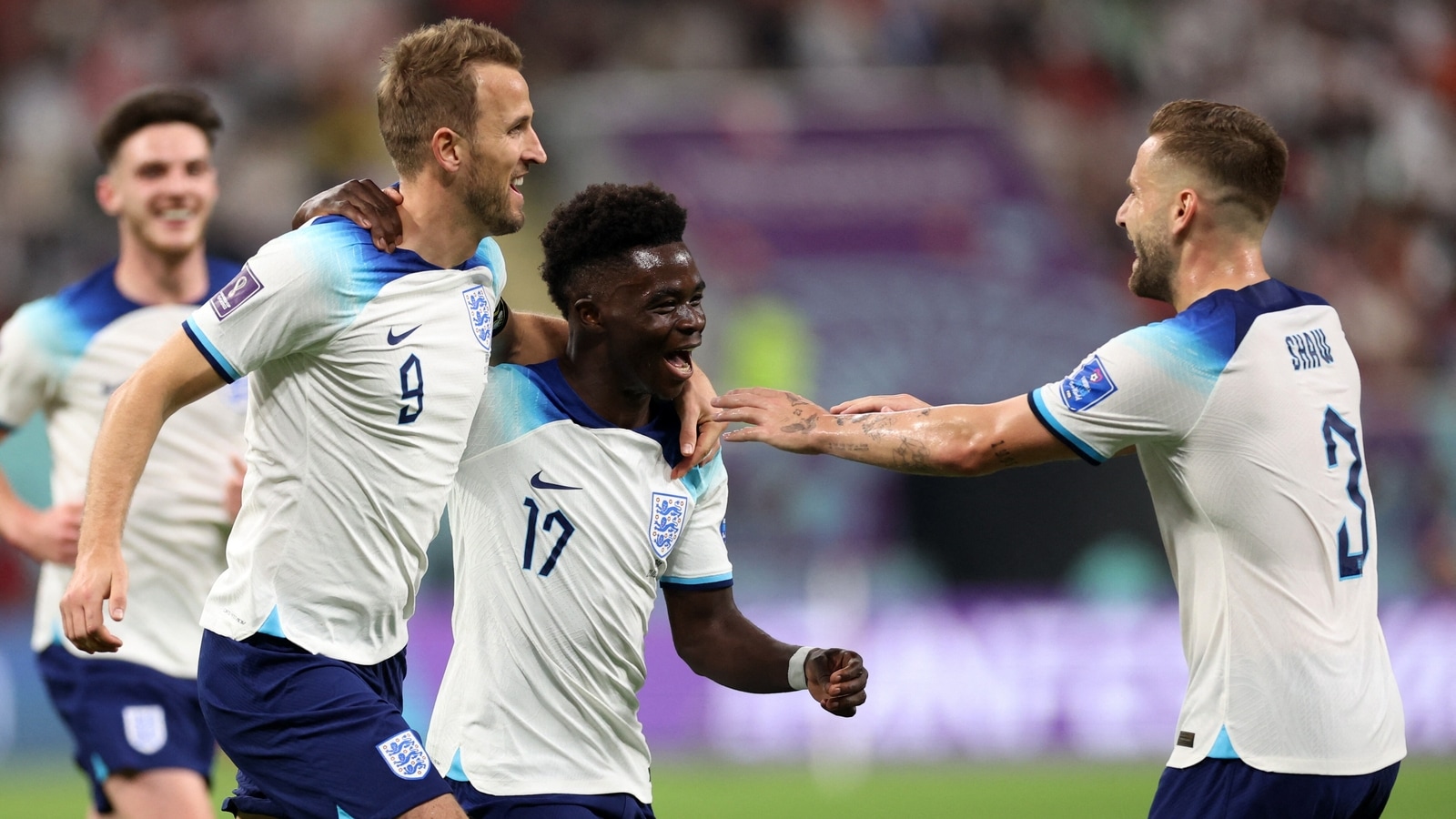
The Art of Organized Chaos: Deconstructing Jurgen Klopp’s Tactical Formations
Jurgen Klopp stands as one of modern football’s most transformative figures, a charismatic leader whose infectious passion is matched only by his profound tactical acumen. His tenure at both Borussia Dortmund and Liverpool has not only yielded significant silverware but has also left an indelible mark on the sport’s tactical landscape. While often associated with the high-octane "Gegenpressing" and "Heavy Metal Football," a deeper dive reveals that Klopp’s tactical formations are far more nuanced and adaptable than a mere all-out assault. They are intricate systems built on relentless intensity, intelligent pressing, verticality, and a unique emphasis on certain player roles that have redefined positions in the modern game.
The Dortmund Blueprint: Genesis of Gegenpressing and the 4-2-3-1
Klopp’s tactical philosophy truly gained prominence during his highly successful period at Borussia Dortmund (2008-2015). Here, he forged the foundational principles that would later be refined at Liverpool. The primary formation employed was often a 4-2-3-1, a shape that provided both defensive solidity and attacking versatility.
At its core, the Dortmund system was defined by Gegenpressing. This wasn’t merely about winning the ball back quickly; it was a sophisticated counter-pressing strategy designed to exploit the opponent’s most vulnerable moment: immediately after losing possession. When Dortmund lost the ball, the nearest players would instantly swarm the ball carrier, attempting to win it back within 5-6 seconds. If unsuccessful, they would transition into a high-intensity zonal marking system, forcing the opponent wide or into predictable long passes. The objective was to regain possession in advanced areas, close to the opponent’s goal, allowing for immediate attacking transitions with minimal passes.
In the 4-2-3-1, the two holding midfielders (e.g., Sven Bender, Nuri Sahin, Sebastian Kehl) were crucial. They acted as a defensive shield, breaking up play, and initiating attacks. Their relentless work rate was vital for covering ground and supporting the pressing efforts. The attacking midfielder (often Shinji Kagawa or Mario Götze) operated in the "number 10" role, linking the midfield and attack, dropping deep to create overloads, and exploiting spaces between the opponent’s lines. The wide players (e.g., Kevin Grosskreutz, Jakub Błaszczykowski, later Marco Reus) were not traditional wingers; they were inverted forwards, cutting inside to shoot or combine, while also being integral to the pressing scheme.
Upfront, the lone striker (most notably Robert Lewandowski) was more than just a goalscorer. Lewandowski was a master of leading the press, occupying defenders, and providing a focal point for direct attacks. His ability to hold up the ball and bring others into play was essential for Dortmund’s verticality. The speed of transition from defense to attack was blistering, often involving just a few passes to unleash the front four. This "Heavy Metal Football," as Klopp famously dubbed it, was electrifying, energy-sapping, and highly effective.
The Liverpool Evolution: From Transition to Dominance
Upon arriving at Anfield in 2015, Klopp inherited a squad that needed significant restructuring. While the core principles of intensity and pressing remained, the tactical formations began to evolve, adapting to the Premier League’s demands and the specific qualities of the players he acquired.
Initially, Klopp experimented with the 4-2-3-1 at Liverpool, often deploying Roberto Firmino as the main striker or as the attacking midfielder behind a more conventional forward. However, as key personnel arrived, most notably Sadio Mané (2016), Mohamed Salah (2017), Virgil van Dijk (2018), and Alisson Becker (2018), the system gradually solidified into the iconic 4-3-3 that brought unprecedented success.
The Definitive 4-3-3: A Symphony of Specialization and Synergy
The Liverpool 4-3-3 under Klopp became arguably the most formidable formation in world football, a testament to its balance, adaptability, and the extraordinary execution by the players. Each position was meticulously designed to contribute to the overall tactical objective.
1. The Defensive Foundation: High Line and Sweeper-Keeper
Klopp’s Liverpool played with an incredibly high defensive line, designed to compress the pitch and facilitate the pressing game. This required immense bravery, coordination, and a world-class center-back pairing, led by Virgil van Dijk. Van Dijk’s exceptional pace, aerial prowess, and unparalleled ability to read the game allowed Liverpool to hold this high line effectively, nullifying counter-attacks and setting numerous offside traps. Alongside him, a strong, quick partner (e.g., Joe Gomez, Joel Matip, Ibrahima Konaté) was crucial for covering and winning duels.
Alisson Becker in goal was not just a shot-stopper but a vital part of the defensive and offensive setup. His sweeping ability behind the high line acted as an additional defender, while his exceptional distribution initiated many of Liverpool’s rapid attacks, bypassing the opponent’s press.
2. The Midfield Engine Room: Work Rate, Balance, and Pressing Triggers
The midfield trio in the 4-3-3 was the engine of the team, responsible for winning the ball, controlling tempo, and providing cover for the marauding full-backs. The roles were often specialized:
- The "Number 6" (Defensive Midfielder): Primarily Fabinho, this player was the anchor, providing a crucial shield for the defense. His tactical intelligence, ability to break up play, and exceptional positional awareness allowed the full-backs and other midfielders to push forward. He also played a key role in recycling possession and setting the tempo.
- The "Number 8s" (Box-to-Box Midfielders): Typically Jordan Henderson and Georginio Wijnaldum, these players were relentless in their work rate. They pressed aggressively, covered vast swathes of the pitch, supported attacks with late runs into the box, and tracked back diligently. Their ability to win second balls and maintain intensity throughout 90 minutes was non-negotiable. Later, players like Thiago Alcantara added a different dimension with his elite passing range and press resistance, while Naby Keita offered dribbling and creative flair.
The midfield’s primary function was to trigger the press, win back possession in central areas, and quickly feed the ball to the attacking trio or the advancing full-backs.
3. The Attacking Trident: False 9 and Inverted Wingers
The front three of Mohamed Salah, Roberto Firmino, and Sadio Mané became one of the most prolific and tactically intelligent attacking units in football history.
- Roberto Firmino (The False 9): Firmino was the lynchpin of the attack, redefining the role of a central striker. He rarely played as a traditional "number 9" occupying the penalty box. Instead, he consistently dropped deep into midfield, creating numerical overloads, linking play, and dragging center-backs out of position. This created vital space for Salah and Mané to cut inside. Firmino’s exceptional pressing, vision, and selfless work rate made him indispensable.
- Mohamed Salah (Right Inverted Winger/Inside Forward): Operating from the right flank, Salah consistently cut inside onto his stronger left foot, posing a direct goal threat. His blistering pace, clinical finishing, and intelligent movement made him a nightmare for defenders. He also contributed significantly to the first line of defense through his pressing.
- Sadio Mané (Left Inverted Winger/Inside Forward): Similar to Salah, Mané attacked from the left, cutting onto his right foot. His directness, dribbling ability, and instinct for goal complemented Salah perfectly. Both wingers were not just goalscorers but also vital components of the high press, initiating defensive actions from the front.
The interchangeability and understanding between these three were telepathic, allowing for fluid attacking movements that were difficult to track.
4. The Full-Backs as Playmakers: Redefining Wide Roles
Perhaps the most revolutionary aspect of Klopp’s 4-3-3 was the redefined role of the full-backs: Trent Alexander-Arnold and Andrew Robertson. They were not merely defensive players; they were Liverpool’s primary creative hubs, effectively operating as wide playmakers.
- Trent Alexander-Arnold (Right-Back): Trent’s incredible passing range, vision, and crossing ability from deep positions were unparalleled. He often drifted into central midfield areas to dictate play, deliver pinpoint crosses, and create chances. His tactical positioning allowed him to be both a wide attacking threat and a de facto midfielder in possession.
- Andrew Robertson (Left-Back): Robertson provided relentless energy, lung-busting overlapping runs, and accurate crosses from wide positions. His defensive solidity and ability to recover quickly were crucial for balancing Trent’s more advanced role.
Their high starting positions and attacking contributions effectively turned the 4-3-3 into something akin to a 2-3-5 in attack, with the two center-backs and Fabinho forming a defensive base, while the two full-backs pushed extremely high to provide width and creativity alongside the front three and the advanced midfielders.
Adaptations and Nuances
While the 4-3-3 was the bedrock, Klopp’s Liverpool was not entirely rigid. He demonstrated a willingness to adapt:
- Occasional 4-2-3-1: When faced with certain opponents or to incorporate an additional attacking player (like Diogo Jota or Cody Gakpo), Klopp would sometimes revert to a 4-2-3-1, with Firmino or another creative player operating behind a more conventional striker, or a wide forward tucking in centrally.
- Set-Piece Dominance: Later in his tenure, Liverpool became a formidable force from set-pieces, with significant input from assistant Pep Lijnders. This added another dimension to their attacking prowess.
- In-Game Flexibility: Klopp’s teams were adept at making subtle in-game tactical adjustments, whether through substitutions that altered the team’s shape or by instructing players to occupy different zones depending on the opponent’s setup.
- The "Box Midfield" (later years): With the arrival of players like Dominik Szoboszlai and Alexis Mac Allister, and a slight tweak to Trent Alexander-Arnold’s role, Liverpool occasionally deployed a "box midfield" in possession, with two deeper midfielders and two more advanced ones, providing more central control and attacking options. This sometimes saw Trent invert into midfield alongside Fabinho/Mac Allister, forming a double pivot in possession, allowing the wide attackers to stay higher and wider.
Beyond the Formation: The Klopp Philosophy
Ultimately, Klopp’s tactical formations are a framework for his overarching philosophy. The emphasis is always on:
- Intensity and Energy: Every player must be willing to run, press, and fight for every ball for the entire match.
- Collective Effort: Individual brilliance is celebrated, but the system relies on every player understanding their role and contributing to the collective. There’s no room for passengers.
- Verticality and Quick Transitions: The aim is always to move the ball forward quickly and directly towards the goal, exploiting spaces created by the press.
- "Mentality Monsters": The tactical blueprint is underpinned by a strong psychological component, instilling a never-say-die attitude and belief in the system.
In conclusion, Jurgen Klopp’s tactical formations are a masterclass in modern football. From the foundational Gegenpressing of Dortmund’s 4-2-3-1 to the refined, dominant 4-3-3 at Liverpool, his systems are characterized by a relentless pursuit of intensity, intelligent pressing, and a revolutionary use of full-backs as creative forces. It’s a philosophy that prioritizes collective effort, strategic aggression, and rapid transitions, creating a brand of football that is as exhilarating to watch as it is effective. Klopp didn’t just win trophies; he provided a tactical blueprint that has influenced countless teams and will continue to shape the beautiful game for years to come.



